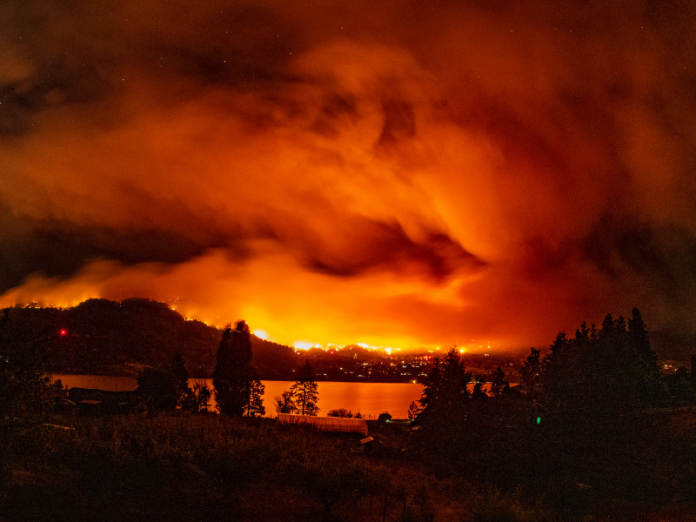YOU SHOULD SUBSCRIBE TO CLIMATE CHANGE WEEKLY.
IN THIS ISSUE:
- The Truth About Canada’s Wildfires
- Podcast of the Week: El Niño and the Coming Climate Madness
- IEA’s “Net Zero” Analysis Long on False Hope, Short on Reality
- Climate Comedy
- Video of the Week: CLIMATE UNCERTAINTY and RISK: An Interview With Climatologist Dr. Judith Curry
- BONUS Video of the Week: Biden Banning ALL Your Home Appliances
Miss Anything at Heartland’s Climate Conference? No Problem.
The Truth About Canada’s Wildfires
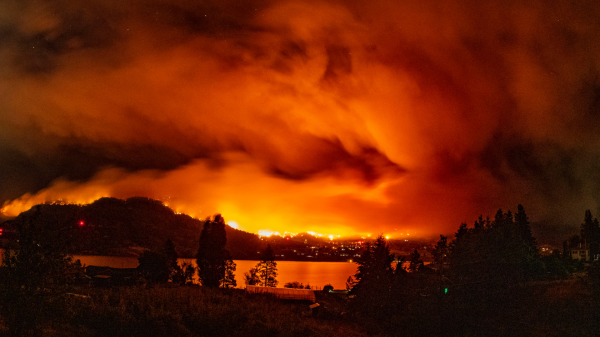
Canada’s wildfires continue to burn, and with smoke from those fires darkening the skies in the United States, the mainstream media are covering it extensively. A common underlying theme in almost every report is that climate change is partly to blame for the size of Canada’s wildfires this season, and that such fires and the heat that is contributing to them are a portent of things to come if we don’t stop using fossil fuels.
“With over 120 million U.S. residents across the Midwest and Northeast under an air quality alert and 60 million residents in the South under heat advisories on Thursday, Americans are contending with two different effects caused by climate change,” Yahoo News reports.
The New York Times assessed the situation thus:
Fires are burning across the breadth of Canada, blanketing parts of the eastern United States with choking, orange-gray smoke. Puerto Rico is under a severe heat alert as other parts of the world have been recently. Earth’s oceans have heated up at an alarming rate.
Human-caused climate change is a force behind extremes like these.
For this essay, I will limit my comments to the wildfire claims, leaving the heat wave attributions for another day.
The truth is hard data, as opposed to climate model generated speculation, belies the link between climate change wildfires and the recent heatwave. Either the “news” outlets are ignorant of this fact and believe what they write, or they are so far in the bag on climate alarmism they couldn’t let the facts get in the way of another story hyping the purported climate crisis.
Wildfires happen every year across the United States and Canada—which is why both countries have designated “wildfire seasons”—and across the globe, but they hardly ever get the sustained, nearly apoplectic coverage Canada’s fires are getting. I guess that’s because many major broadcast and print media outlets are on the East Coast and seeing the smoke firsthand, which others experience every year or two, brought the impact of fires home to the horrified journalists.
But journalists’ sudden awareness of wildfires and that they create smoke doesn’t prove this year’s fires are unusual or caused by climate change. In fact, the evidence shows they aren’t.
Smoke from wildfires in Canada has periodically darkened or yellowed the skies on the U.S. East Coast and the upper Midwest in the past, as they have done in recent weeks. Long before anyone used fossil fuels to generate electricity or for transportation, smoke from Canadian wildfires created “yellow” or “dark” days multiple times in history, such as on May 12, 1706; October 21, 1716; August 9, 1732; May 19, 1780; July 3, 1814; November 6-10, 1819; July 8, 1836; September 2, 1894; and September 24-30, 1950, the New England Historical Society (NEHS) reports. Contrary to media claims, the smoke drifting in from Canada’s wildfires into the United States is far from unprecedented.
Canada’s May 1780 wildfires so darkened eastern U.S. skies that May 19, 1780 became known as “New England’s Dark Day.” Reports from the time state the smoke was so bad that candles had to be lit at midday to see.
As was true in the past when smoke from Canadian wildfires blew into the United States, the cause is temporary weather conditions, not climate change. Gunnar Schade, D.Sc., an associate professor with Texas A&M University’s Department of Atmospheric Sciences, says after hitting the air stream the smoke from Canada’s wildfires was delivered by a “North Central Canadian (Arctic) high-pressure system and a persistent, slow-moving, low-pressure system off the northeast coast [which] combined [to] cause large-scale southerly to southeasterly air movement, which has taken the smoke to the U.S. upper Midwest, southeast and east coast.”
Not only were this year’s fires not unique, they also did not, as the media stories consistently imply, represent a trend in Canadian wildfires that could be attributed to climate change. In fact, the evidence shows wildfires in Canada and globally have been declining during the recent period of modest warming.
Data from Canada’s National Forestry Database for the entire country and for the province of Quebec, where many of the recent wildfires occurred, show declining trends for both the number of fires and area burned over the past 31 years. Interestingly, a study by scientists with the Canadian Forest Service attributes the decline in forest fires in Canada over the past few decades to the combined effect of carbon dioxide fertilization and modestly rising temperatures, which has resulted in improved soil moisture. Plants lose less water through transpiration under conditions of high CO2 and higher temperatures, so less moisture is drawn from soil.
To translate, the Canadian Forest Service surmises that climate change, rather than causing more and more-severe wildfires, is responsible for a decades-long decline in wildfires.
Globally, NASA satellites have recorded a significant decline in the number of wildfires. In the report “Researchers Detect a Global Drop in Fires,” NASA writes, “Globally, the total acreage burned by fires declined 24 percent between 1998 and 2015, according to a new paper published in Science.”
Nor, in its most recent report, does the U.N. Intergovernmental Panel on Climate Change attribute any shift in “fire weather” to climate change or find any increase in the number or intensity of wildfires regionally or globally.
Following the science, therefore, one must conclude climate change is not to blame for the recent fires in Canada or the smoke they delivered to eastern U.S. streets and newsrooms.
Indeed, even as wildfires ravage Canada, the amount of acres consumed by such fires in the United States this year is only 51 percent of the ten-year average for mid-June, and data show Alaska is experiencing its slowest wildfire season in more than 30 years.
If not climate change, then what factors are responsible the severity of the 2023 wildfire season in Canada? The answer is short-term weather conditions such as a drought in some regions, less winter snowfall and warmer temperatures, and long-term poor forest management—the same factors that have caused a modest uptick in wildfires in the western United States in recent years.
As a peer-reviewed study cited by Canada’s Fraser Institute states,
Canada has failed to fund the proactive management of forest fires sufficiently and is not poised to do better moving forward. “Wildfire management agencies in Canada are at a tipping point. Presuppression [sic] and suppression costs are increasing but program budgets are not.” But clearly, a lack of fire suppression is also a problem: “Wildfire suppression contributes to a wildfire problem but paradoxically it is wildfire use that will help to solve this problem. The wildfire management toolbox must include wildfire use to manage wildfires at the landscape scale because it is not feasible to effectively use prescribed burns and/or fuel management treatments alone to restore expansive wildfire-dependent ecosystems.” That’s a somewhat academic long-winded way of saying you need to fight fire with fire, but the point is valid nonetheless.
As Climate Realism has discussed repeatedly, it takes three things to start a wildfire: fuel, the right weather conditions, and a source of ignition. Shifting forest management policies in the United States since the presidency of Ronald Reagan have resulted in a growing fuel load, with many national forests having more dead timber than growing trees, and other forests packed tightly with small trees and underbrush. High fuel loads combined with drought and high heat create tinderbox conditions. Then all you need is a lighting strike, malicious arson, or simple human carelessness with a match, cigarette, or improperly tended campfire or trash burning, and you have a wildfire.
The fear and actual damage generated by wildfires each year is bad enough without the bought and paid-for mainstream media making it worse by encouraging the misdirection of resources away from actions that address the true causes of wildfires, to the battle against climate change. There is no evidence climate change has or will cause more heat waves, droughts, or wildfires.
Sources: American Thinker; Climate Realism; The New York Times; Yahoo News; Fraser Institute
Podcast of the Week
By making the official proclamation that El Niño has begun, the National Oceanic and Atmospheric Administration (NOAA) just sent the corporate media into a flurry of doomsday predictions. Who’s fault is it? Ours of course. We blew past the so called 1.5°C limit set by the Paris accord.
Subscribe to the Environment & Climate News podcast on Apple Podcasts, iHeart, Spotify or wherever you get your podcasts. And be sure to leave a positive review!
Get your Copy at Amazon TODAY!
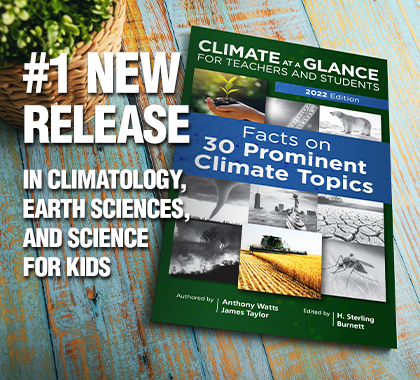
IEA’s ‘Net Zero’ Analysis Long on False Hope, Short on Reality
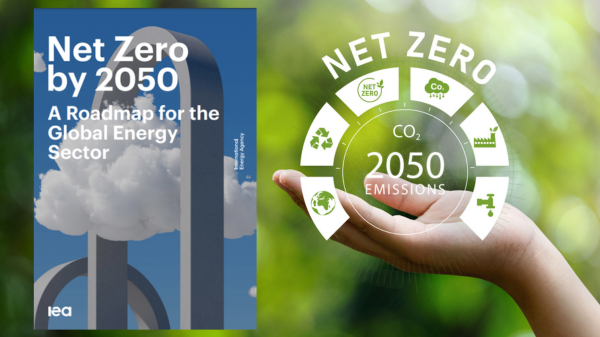
A recent analysis of the International Energy Agency’s (IEA) 2021 report “Net Zero by 2050: A Roadmap for the Global Energy Sector,” which endorsed the idea that the world can and should wean itself from fossil fuels by 2050, casts great doubt on its conclusions. In the report the IEA called for an immediate end to new investment in fossil fuels and a vast expansion of renewable energy generation.
The IEA touted its report as providing “the world’s first comprehensive study of how to transition to a net zero energy system by 2050 while ensuring stable and affordable energy supplies, providing universal energy access and enabling robust economic growth.”
As Carl Sagan famously said, “extraordinary claims require extraordinary evidence,” and the claim that we can discard and replace the complex energy system that has served as the foundation for the sustained and previously unimagined economic growth from the late nineteenth century on through the present, in 20 short years without substantial disruption, is an extraordinary claim indeed.
Accordingly, RealClearFoundation commissioned the Energy Policy Research Foundation (EPRF) to undertake a detailed analysis of the IEA’s report. It’s just been released, and it shows reaching net zero by 2050 while maintaining or enhancing global economic progress is almost certainly a fantasy and the attempt could even do more harm to humanity and modern civilization than climate change itself.
At the outset of his Forbes column discussing the EPRF’s analysis of the IEA report, contributor Tilak Dosh notes the IEA’s report represents a paradigm example of the broken windows fallacy:
[T]he notion [is] that breaking windows creates demand for the services of glass pane makers and hence is of net benefit to society. The fallacy lies in the fact that this ignores the cost imposed on the owners of the broken windows who could have had more productive uses for the money now used to repair broken windows.
The professional economists at the IEA assert that breaking the vast energy complex supporting the global economy to support low-density solar, wind and battery technologies will be of net benefit to national economies around the world. The sheer economic illiteracy of what is supposed to be the rich world’s authoritative energy thinktank is astounding, to say the least.
The EPRF’s analysis confirms this. Among the numerous flawed assumptions the EPRF finds in the IEA report is the belief that wind and solar technologies will become ever-cheaper and more efficient. The EPRF’s analysis shows the IEA fails to understand why prices for such technologies have dropped as fast as they have thus far: “Cost declines in solar PV modules were attributable to Chinese manufacturing practices with vast economies of scale, cheap coal-based power supplies, and ‘mercantilist’ support from the Chinese central and local governments which practiced predatory pricing in export markets.” These conditions are unlikely to prevail going forward.
Major wind manufacturers are already reporting losses in the billions of dollars, as they did in the past year, losses which no company can sustain over the long term. Some companies have announced they are pulling back from renewable commitments and are trying to renegotiate the terms of projects already contracted for.
In addition, the EPRF notes the IEA fails to account for the tremendous costs associated with: (1) the tens of thousands of miles of new high-voltage transmission lines; (2) technologies to store or supplement wind and solar power’s inherently intermittent and fluctuating supply; and (3) the impact of these two factors on the cost to ratepayers. Citing a Eurostat study, the EPRF notes that as supposedly cost-competitive renewables have been added to the electric grid across the European Union, costs have risen dramatically and reliability has declined.
The same is true in the United States. Electric power prices have risen more rapidly in states that mandate or encourage use of renewables and shut down existing fossil fuel and nuclear plants than in states not doing so.
As a result, European countries are scaling back and modifying the timeline of their green energy ambitions, with some countries even planning new nuclear power plants—countries which shelved all nuclear ambitions decades ago.
Nor does the IEA fairly account for the huge increase in critical mineral production needed for the solar panels, wind turbines, batteries, and grid networks. The EPRF notes critical minerals such as “lithium, graphite, cobalt, and nickel, will be at least 1,800% [above present demand] by 2040, even in a less aspirational [IEA] scenario.” The IEA admits “meeting the additional demand could be very challenging.” That may be the understatement of the year. China currently controls most of the critical mineral supplies because it dominates their production or the refining and production of the finished products.
Although it may be logically possible to meet the IEA’s net-zero goals, there is no evidence whatsoever that it is physically or politically possible. Developed countries demanding net zero have taken few if any actions to expedite the opening of new critical mineral mines or expand existing ones. In the United States, President Joe Biden is blocking proposed critical mineral mines almost as fast as plans can be submitted. There is no good reason to believe sufficient supplies of additional critical minerals will be available for the massive, rapid, net-zero energy transition endorsed in the IEA’s report.
One of the most important foolish assumptions built into the IEA’s net zero analysis is that all countries in the will world cooperate to meet net-zero goals even though numerous countries are expanding their coal, oil, and gas production and consumption and making huge investments in technologies (such as jets and power plants) and long-term infrastructure reliant on fossil fuels. These countries include the biggest and fastest growing emitters in the developing world, such as Brazil, China, India, Indonesia, Pakistan, Russia, Suriname, and Vietnam, to name just a few. These investments have productive lives long beyond the 2050 net-zero target date. Many of these countries haven’t even set net-zero goals, instead saying they expect to reach peak emissions at some unspecified level at various dates in the future. This has been repeatedly discussed in previous Climate Change Weekly reports.
Doshi’s Forbes article closes with this statement:
The IEA’s original mandate was the assurance of required energy supplies at reasonable cost. The subversion of this mandate is put forward succinctly by Mr. [Rupert] Darwall’s … foreword to the [EPRF] report: “The IEA could have chosen to remain faithful to its original mandate, but as the Energy Policy Research Foundation report shows, in seeking to become a cheerleader for net zero, the IEA has allowed itself to be used as a tool for climate extremism, has misled policymakers, and has endangered the world’s economy and Western security, all while forsaking the purpose for which it was created.”
I couldn’t agree more with that assessment.
Sources: Energy Policy Research Foundation; Forbes; International Energy Agency
Heartland’s Must-read Climate Sites
CLIMATE UNCERTAINTY and RISK: An Interview With Climatologist Dr. Judith Curry
Recently, respected climatologist Dr. Judith Curry published a new book, “Climate Uncertainty and Risk: Rethinking Our Response.” This book helps us rethink the climate change problem, the risks we are facing, and how we can respond to these challenges. Understanding the deep uncertainty surrounding the climate change problem helps us to better assess what the proper course of action our society should take. This book shows how uncertainty and disagreement can be part of the decision-making process. It provides a road map for formulating pragmatic solutions.tch to see a review by the Dr. Curry herself. We’ll also take a look at some of the silliest climate news of the week!
Biden Banning ALL Your Home Appliances
New rules from the Biden administration’s Department of Energy will make most of the ordinary appliances in your home contraband. Thanks to useless, expensive, and unnecessary new energy efficiency standards, your washing machine will work harder and not get your clothes as clean, your dishwasher will not get your dishes as clean, and your refrigerator will not perform as you expect. And your gas stove? Hold on to it and find a good repairman. Those are on the outs, too.
The Biden administration says these new rules will save you money (it won’t) and save the planet (it won’t). This government sees absolutely no limits on its desire to run every aspect of our lives, no matter how small.
Climate Comedy
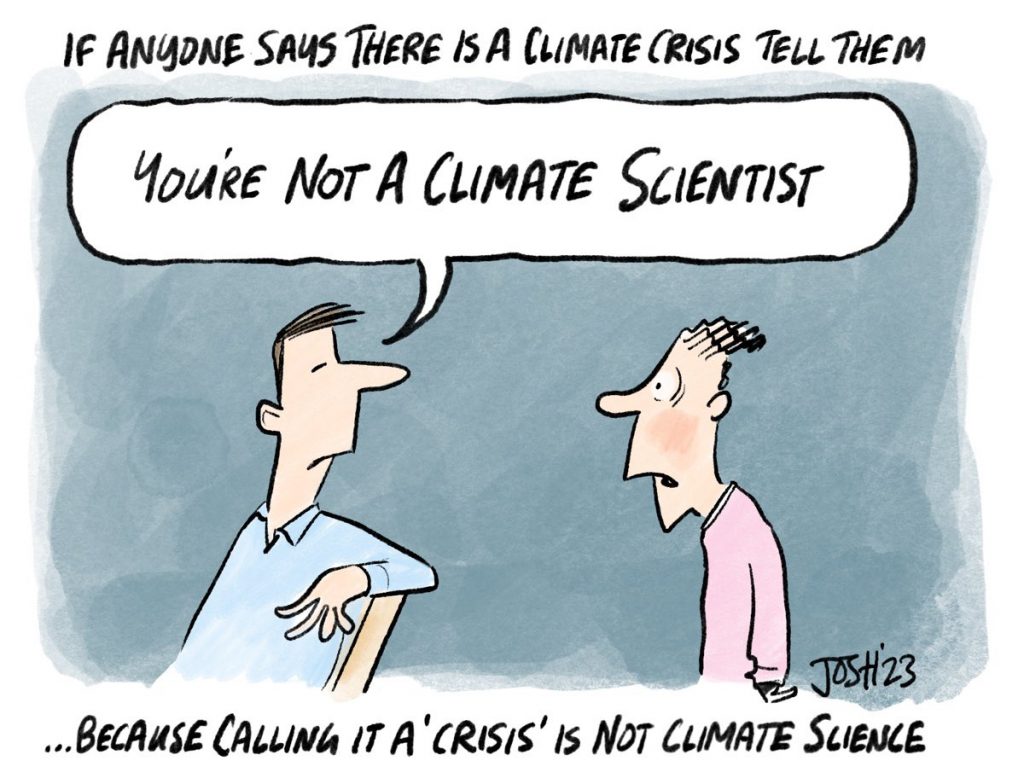 via Cartoons by Josh
via Cartoons by Josh
Recommended Sites


